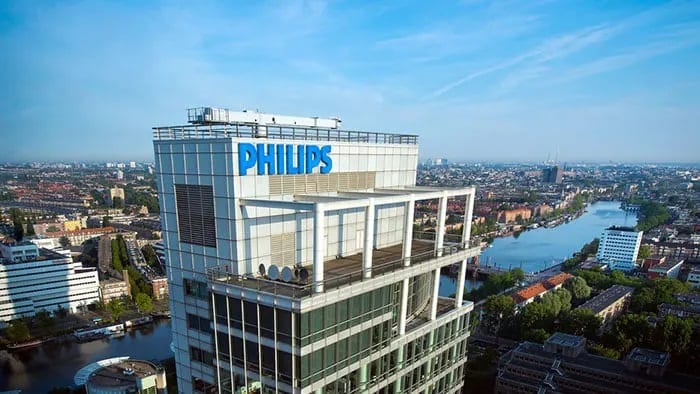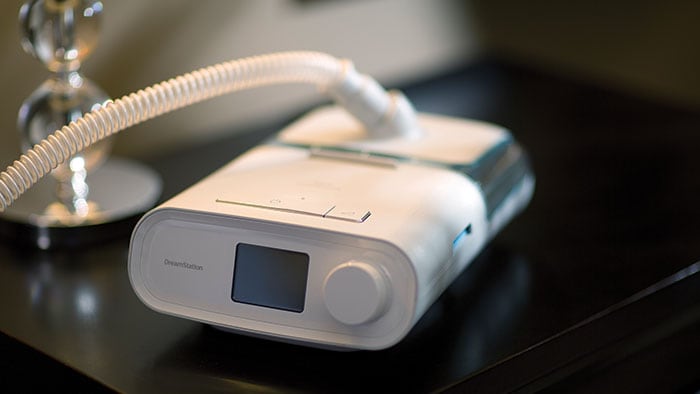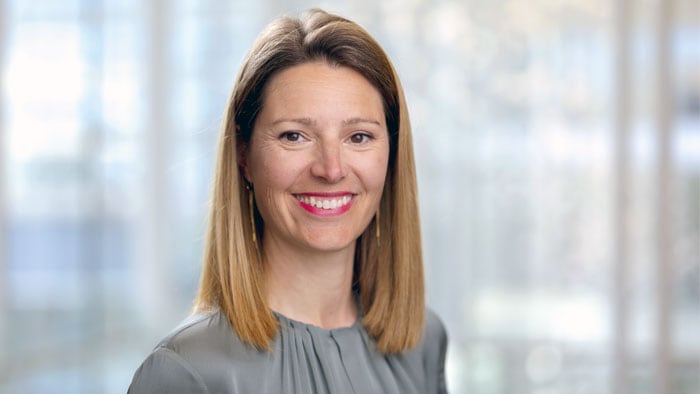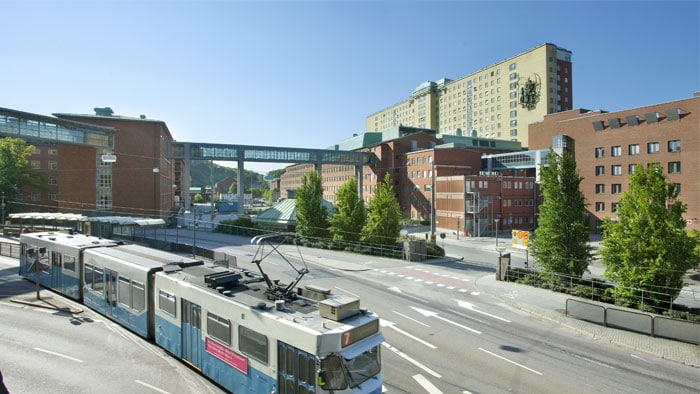Circularity is often presented as a fresh, new answer to humankind’s pressing environmental challenges. In actual fact, ‘circular’ is not new at all. Pre-industrialization, it was the dominant economic model. Nothing was lost or discarded, everything was re-used, repaired, repurposed or recycled. And so the wheel went round.
The 19th century saw the rise of the linear economy, where raw materials are transformed into products that are used until they are discarded as waste. This ‘take-make-waste’ model was driven by, among other things, the industrial revolution and the availability of cheap energy thanks to coal and steam. It is a polluting model that drives global environmental challenges, including climate change and biodiversity loss.
Linear became totally dominant with mass production and the rise of the consumer society after World War II. That same period also saw, in response, the reintroduction of circular thinking. Key milestones included Boulding’s influential 1966 essay The Economics of the Coming Spaceship Earth, the publication of Braungart and McDonough’s Cradle to Cradle, and the advent of think-tanks such as the Biomimicry Institute and Ellen MacArthur Foundation.
So where do we stand today? To focus minds and drive progress, many ambitious climate and circular economy targets have been set. The European Union, for example, wants to achieve a circular economy by 2050 as a precursor to becoming net-zero and halting biodiversity loss. The Netherlands was the first country to set a 100% circularity target for 2050, with the ambition to halve primary resource use by 2030. And the United Kingdom has adopted an ambitious program to deliver a net-zero National Health Service by 2050. But, on the whole, as IPCC chair Hoesung Lee commented, “We are walking when we should be sprinting." [1]
The harsh reality is that the global situation is getting worse year-on-year, driven by rising material extraction and use: from 9.1% of global production based on circular economy principles in 2018, to 8.6% 2020, and now 7.2% in 2023 [2]. Statistics like these underline the need to rapidly accelerate the adoption of circularity. And nowhere more so than in healthcare.
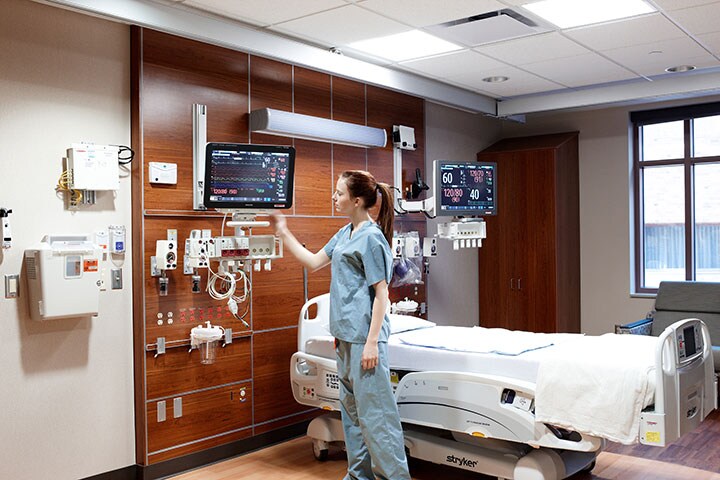
Circularity in healthcare – an urgent necessity and a great opportunity
Traditionally, the focus in healthcare was understandably on caring for people. Energy usage, waste, etc. were not a major priority. But now, with healthcare’s expanding ecological footprint, we face the huge challenge of having to 'green' health systems that collectively use 10% of all materials used globally every year! This imperative was further underscored when, in July 2022, the United Nations General Assembly unanimously affirmed a clean, healthy, and sustainable environment as a human right – not just a privilege for some.
The transition to a circular economy is founded upon three principles, but we can see here below that the healthcare sector still has a way to go:
| | |
| | |
| | |
| | |
As an industry, we – health technology companies, healthcare systems and other stakeholders – have a responsibility to act. The good news is that, for a company like Philips, circularity presents a strategic opportunity to help our customers create resilient and sustainable healthcare systems that are resource-efficient and more connected and inclusive – as well as delivering care to more patients.
While the case for transitioning to a circular economy is manifestly clear, the real conversation we need to have now is: How do we rapidly scale up towards a circular healthcare system? There is no time to lose!
We need to design adaptive circular systems, which respect the constraints on the planet’s resources. This requires collaboration across the value chain, a deep understanding of material flows, and focusing on what truly creates value for our customers.
Committed to circularity as a driver of sustainable healthcare
Circularity is critical to the sustainable use of resources and a prerequisite for the decarbonization of healthcare. Philips’ circular economy strategy can be summarized as: Use less, use longer, use again.
In 2022, products, services and solutions that contribute to circularity accounted for 18% of Philips’ total revenues, calculated according to our externally audited methodology. Our circular revenue framework reflects the propositions we put on the market to help our customer increase the circularity of healthcare. It is made up of four pillars: 1) circular design, 2) circular service & delivery models, 3) circular in-use management (optimizing and extending use at a customer), and 4) circular end-of-use management (taking responsible care of the product after use by a customer).
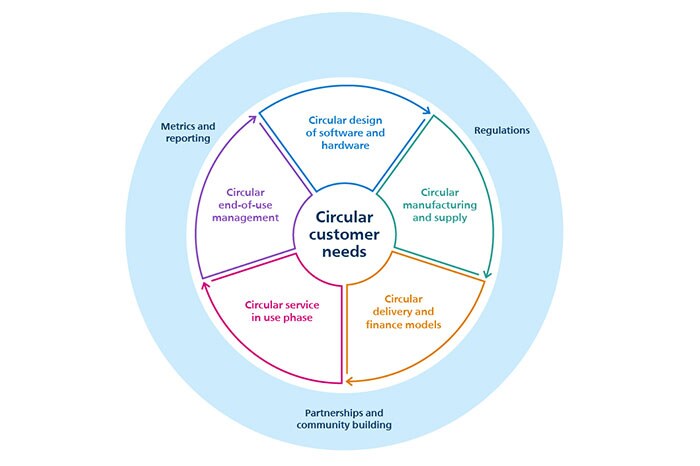
Besides these four customer-focused activities, we drive circularity in our own operations, with a strong program to increase circular materials management across our sites. In 2022, we improved the circularity of the waste stream from our sites to 91%, increasingly reducing, re-using and recycling operational waste. An example is the replacement of single-use plastic in supplier packaging with boxes that can be used repeatedly. As a result, less than 0.1% of the remaining operational waste was land-filled, in line with our ‘zero waste to landfill’ ambition.
Design is key to circularity
Circular design is all about making sustainable choices from the very start of the product creation process, so that materials and components are suitable, at end-of-use, for repair, re-use or refurbishment. Some 40-50% of global CO₂ emissions are attributable to materials extraction, supply, and the manufacture of equipment – often referred to as ‘embedded carbon’ [8]. Healthcare is a huge consumer of these resources. It is, therefore, vital that we find ways to choose and use materials for medical systems and devices in a sustainable manner.
Our EcoDesign program focuses on four impact areas: increasing the energy efficiency of our products and solutions, making our packaging sustainable, phasing out unwanted substances, and designing for circularity. We are committed to designing all of our new products in line with our EcoDesign requirements by 2025. To give just one example of the resource efficiency we are striving for: Philips’ MRI scanners, with their fully sealed BlueSeal magnet technology, have already saved over 1,000,000 liters of helium [8].
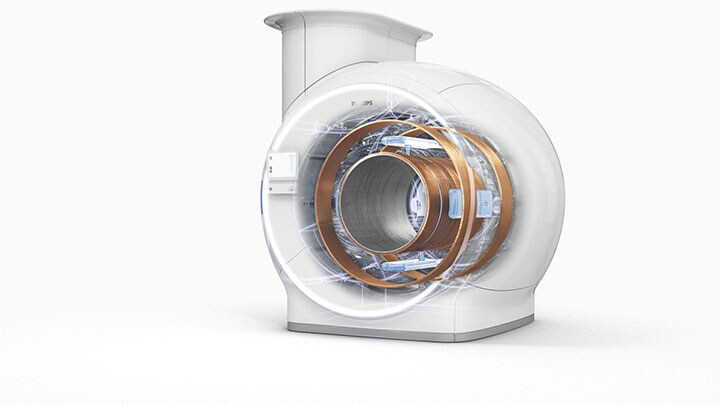
Teaming up to deliver circularity – new opportunities for care providers
At Philips, we team up with our customers and suppliers to innovate solutions that improve people’s health and well-being and help build resilient health systems while respecting the environment. We are reducing the use of new materials and resources, while simultaneously maximizing the lifetime value of existing products by offering innovative service models, extending lifetime resource efficiency, and implementing smart digital solutions.
Products-as-a-service
With innovative new business models, we are shifting from selling the actual product or system to offering its functionality ‘as a service’. This not only allows our customers to access the equipment they need while avoiding upfront capital expenditure, it also gives us an opportunity to reshape our relationship with our customers and to team up with partners across the value chain to improve material efficiency. To help health systems transition to a circular model, Philips Capital offers efficient circular financing structures and flexible payment models that can, for example, help to extend the product’s lifetime.
Upgrades and lifetime extensions
Remote and on-site upgrades services such as Philips SmartPath make it possible to enhance existing systems to current technology or increased capacities and keep them in valuable use for longer.
End-of-use management: refurbishment and recirculating parts
Our Philips Circular Edition portfolio allows customers to benefit from refurbished, upgraded and quality-tested technology at lower cost. As part of our ambition to close the loop for all professional equipment by 2025, over 3,400 systems were traded-in by customers in 2022.
In the US, our AllParts parts recovery service breaks down the usable parts of equipment from Philips and other major manufacturers to be used again. Recirculating materials in this way helps to reduce healthcare’s carbon footprint and extend access to care.
If repair, refurbishment and parts recovery are no longer an option for a system that is returned to us, local recycling networks help us to recycle back to raw materials.
Digital – an often overlooked driver of resource efficiency
Smart digital tools, green software and network connectivity make it possible to deliver maximum value with minimum resources. In healthcare, this supports telehealth and the shift of care from resource-intensive clinical facilities to networked lower-cost settings and the home – giving more people access to care. For example, replacing physical visits with telemedicine appointments resulted in a 40-70 times decrease in carbon emissions [10].
The transition to cloud-, service- and software-based solutions also saves on the materials needed for on-site enterprise hardware and reduces CO₂ emissions. Research has shown that the use of large, centralized cloud-based data centers, instead of on-premises infrastructure, reduces power consumption by 84% [11] and only requires one quarter of the servers [12].
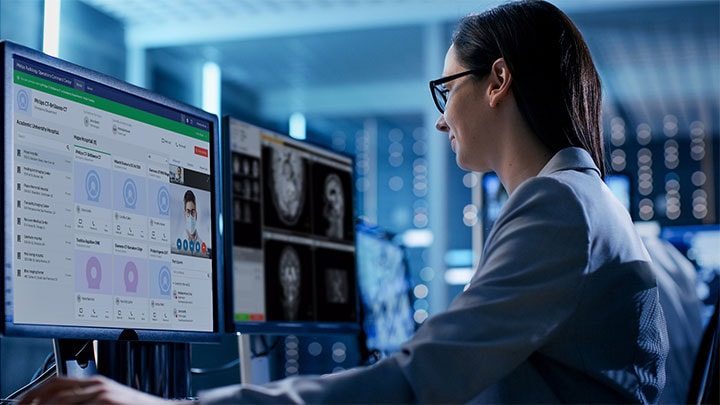
The increased efficiency enabled by software can also optimize the utilization of hardware. In radiology, for example, Philips PerformanceBridge helps imaging centers get more value out of their systems.
That said, digital is not a ‘free lunch’ when it comes to resource use. Software and AI need to run on hardware, and with an exponential growth of data, particularly within healthcare, there is growing interest in green software and AI design that can help reduce the consumption of physical materials and energy of ICT hardware, which is the fastest growing e-waste in the EU [13]. In the realm of AI, too, we know that the algorithms are computationally intensive. In another case of ‘back to the future’, some software developers are even advocating revisiting the know-how and capabilities of efficient coding they had when they had to find a way around the limitations of 32-bit programming.
Enabling and measuring impact
Having discussed ‘what’ we need to do, ‘why’ we need to do it, and ‘how’ we at Philips are doing it, we come back to the central question: How to drive circularity to scale at speed?
To support the adoption of circular business models, the right enabling conditions need to be created at scale. For instance, incentivizing consumers and business customers to return products through deposit and buy-back schemes. And setting up effective collection and processing networks. Governments and other regulators have a key part to play here, by setting clear standards, offering legislative or tax incentives that support circular practices, and removing regulatory roadblocks. Trade associations can assist too, by advocating and harmonizing sustainable procurement practices.
We recognize the challenge many hospitals face in moving away from linear purchasing, particularly in shifting their budgets from capex to opex so that equipment can be leased or accessed in X-as-a-Service constructions. This requires C-Suite leadership across clinical, procurement, and finance departments to team up and utilize (or leverage) service-based financing models in line with their sustainability ambitions.
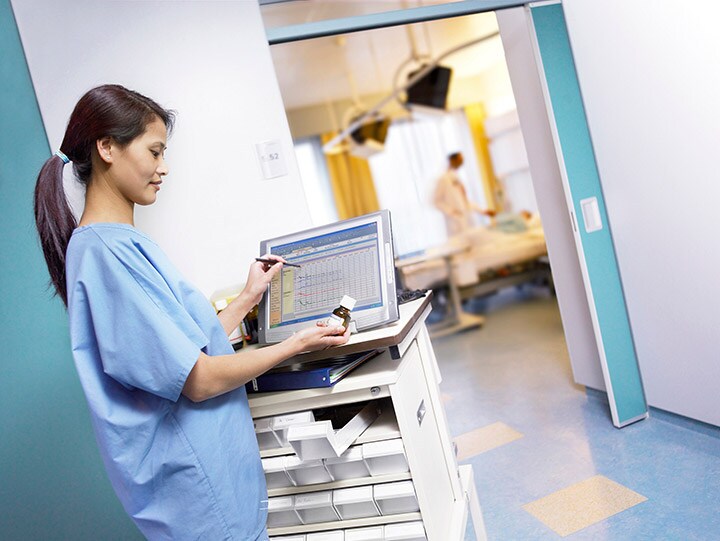
There is also a widely accepted need for global circularity metrics to enable consistent measurement and reporting on progress. Revenue-related metrics help emphasize the economic value of circularity. For Philips, Circular Revenue as a single overarching metric brings together the various circular practices within our company. We will continue to work closely with our partners – e.g. through the Circular Economy Indicators Coalition hosted by the Platform for Accelerating the Circular Economy (PACE) and Circle Economy to drive the definition of practical, actionable metrics to scale circularity.
Joining forces to drive sustainable impact in healthcare
I opened this article with a brief historical perspective on circularity. Now is the time to come together and write a new chapter, with circularity not as an end in itself, but as an integral driver of sustainable healthcare.
I am greatly encouraged to see what can be achieved when stakeholders across the value chain team up to create circular solutions together, as illustrated by our partnerships with France’s Rennes University Hospital and leading Portuguese translational biomedical research and clinical care provider Champalimaud Foundation, the latter leveraging our service-based financing.
The healthcare sector is a significant contributor to CO₂ emissions and therefore has an important role to play in mitigating climate change. This partnership will allow us to continue to ensure the best care for our patients while at the same time helping to reduce the healthcare sector’s environmental impact.
Leonor Beleza
President of the Champalimaud Foundation
To me, these partnerships clearly show how we live up to our purpose of improving people’s health and well-being, while acting responsibly towards our planet and society. And I am so glad that more and more customers are teaming up with us on this journey.
Keen to learn from others’ best practices, I would love to hear how your organization is putting circular thinking into practice.
References
[1] https://www.ipcc.ch/report/sixth-assessment-report-cycle/
[2] Circle Economy. 2023. Circularity Gap Report 2023 https://www.circularity-gap.world/2023
[3] Circular Economy – Circularity Gap Report 2020 https://assets.website-files.com/5e185aa4d27bcf348400ed82/5e26ead616b6d1d157ff4293_20200120%20-%20CGR%20Global%20-%20Report%20web%20single%20page%20-%20210x297mm%20-%20compressed.pdf
[4] https://practicegreenhealth.org/topics/waste/waste-0
[5] Health Care Without Harm (2019). Healthcare’s climate footprint: How the health sector contributes to the global climate crisis and opportunities for action (p.22). https://noharm-global.org/documents/health-care-climate-footprint-report
[6] https://www.sciencedirect.com/science/article/pii/S0959652620354214
[7] https://ellenmacarthurfoundation.org/topics/biodiversity/overview
[8] https://ellenmacarthurfoundation.org/completing-the-picture
[9] Total helium saved compared to conventional, helium-cooled scanners across both production and operations since 2018
[10] Holmner, A., Ebi, K. L., Lazuardi, L., & Nilsson, M. (2014). Carbon footprint of telemedicine solutions--unexplored opportunity for reducing carbon emissions in the health sector. PloS one, 9(9), e105040. https://doi.org/10.1371/journal.pone.0105040
[11] https://aws.amazon.com/about-aws/sustainability/
[12] NRDC (2014). Data Center Efficiency Assessment. Scaling Up Energy Efficiency Across the Data Center Industry: Evaluating Key Drivers & Barriers
[13] https://joinup.ec.europa.eu/collection/rolling-plan-ict-standardisation/ict-environmental-impact-rp2023
Share on social media
Topics
Author

Robert Metzke
Philips Global Head of Sustainability Mr. Metzke leads Philips’ activities in Sustainability where he drives the company’s strategy towards innovative, sustainable business models and embedding sustainable and circular ways of working across Philips. In particular, Robert and his team are leading all activities with regards to Philips' environmental responsibility, with a focus on climate action, circular economy and expanding access to healthcare in underserved communities, as part of Philips overall purpose to improve people's health and well-being. Before joining Philips, Mr. Metzke worked at McKinsey & Company as a consultant where he gained 5 years of experience in strategy and innovation in the high-tech, healthcare and public sectors. Mr. Metzke has a background in journalism, science publishing (Science/ AAAS) and academic research (physics). He is married, has three children and lives in the Netherlands.
Follow me on
